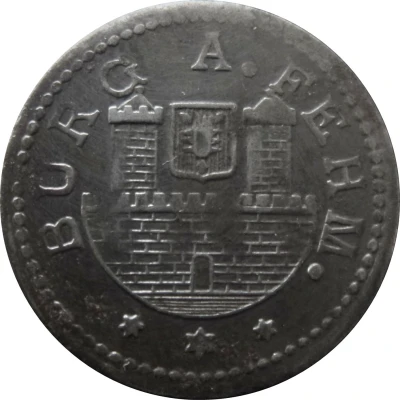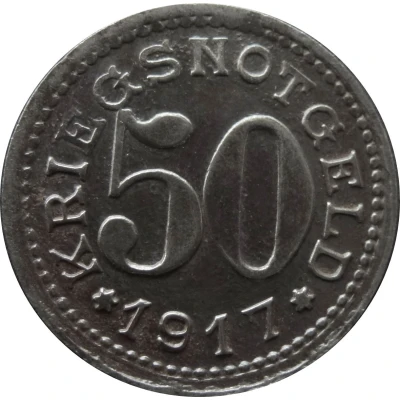


© Willem63 (CC BY-NC-SA)
50 Pfennigs - Burg auf Fehmarn
1917 year| Iron | 2.3 g | 20.2 mm |
| Issuer | City of Burg auf Fehmarn (Prussian province of Schleswig-Holstein) |
|---|---|
| Emperor | William II (Wilhelm II) (1888-1918) |
| Type | Standard circulation coin |
| Year | 1917 |
| Value | 50 Pfennigs (50 Pfennige) (0.50) |
| Currency | Mark (1914-1924) |
| Composition | Iron |
| Weight | 2.3 g |
| Diameter | 20.2 mm |
| Thickness | 1.1 mm |
| Shape | Round |
| Technique | Milled |
| Orientation | Medal alignment ↑↑ |
| Demonetized | Yes |
| Updated | 2024-10-04 |
| Numista | N#313317 |
|---|---|
| Rarity index | 95% |
Reverse
Pearl rim, legend surrounding denomination centered
Script: Latin
Lettering:
KRIEGSNOTGELD
50
✶ 1917 ✶
Edge
Plain
Interesting fact
One interesting fact about the 50 Pfennigs - Burg auf Fehmarn 1917 coin is that it was issued during a time of economic turmoil in Germany, specifically during the hyperinflation period of the early 1920s. The coin's iron composition was a result of the wartime economy and the lack of available metals, and it was one of the few coins that were produced during this time that did not have a portrait of a German leader or a national symbol. Instead, it features the image of a medieval castle, which represents the city of Burg auf Fehmarn. This coin is a unique piece of history that reflects the economic and political climate of Germany during that time.